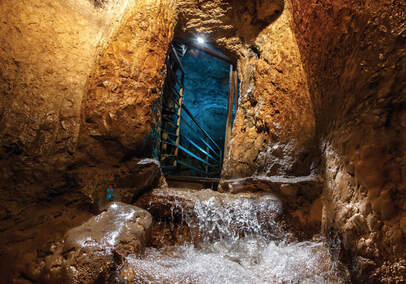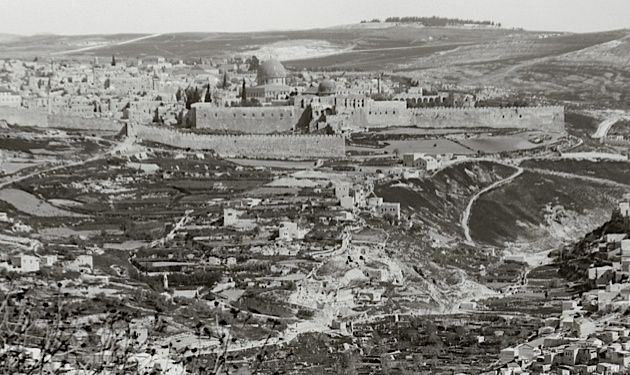
In this contemplative Psalm the Korahites sang of their longing for God and his dwelling.
They long for the presence of God in the Temple. Perhaps written during captiviy or by David when he was banished by Saul’s tyranny or Absolom’s rebellion. Certainly it is from Trans-Jordan (Verse 6).
Notice that the longing is as that of the deer for the ‘water brooks’ and it is significant that a few verses later he refers the noise or roar of ‘your’ TSINNOR.
This word is used only twice in the Old Testament. The other occcasion is in 2 Samuel 5:8 where David challenges his men about forcing entry to the Jebusite stronghold. He says “Whoever climbs up by way of the TSINNOR (translated as ‘water shaft’ or similar) and defeats the Jebusites (the lame and the blind, who are hated by David’s soul), he shall be chief and captain.”
I believe this is the self-same TSINNOR referred to in the Psalm.
As one who has visited the site it is true today that, as many tourists attest, you can still hear the water from Gihon rushing along through the tunnel of Hezekiah.
Noted Serbian photographer Zoran Strajin who specialises in panoramic photographs has photographed Hezekiah’s Tunnel and described Gihon (in its much diminished state today), this way…
‘The only spring in Jerusalem, the Gihon is a siphonic, karstic spring, and its name means “gushing”; it surges and the sound can be easily heard. It is estimated that the Gihon could have supported a population of about 2,500. The cave is a natural one, but it has been widened. Solomon was anointed at the Gihon Spring while his brother, Adonijah, was attempting to take the throne through a surreptitious coronation at En Rogel.’
From deep underground the Gihon water came gushing and bubbling up and its roar could be heard from some distance. To the Psalmist that sound is associated with worship at the shrine that David had put at Gihon to house the Ark and the sacred objects. That sound calls to his own deep place, his heart which longs to be there again!
Read about the origin of this site in 'THE PLACE HaMakom: where Jerusalem's temples stood'
Details of availability HERE




 RSS Feed
RSS Feed
